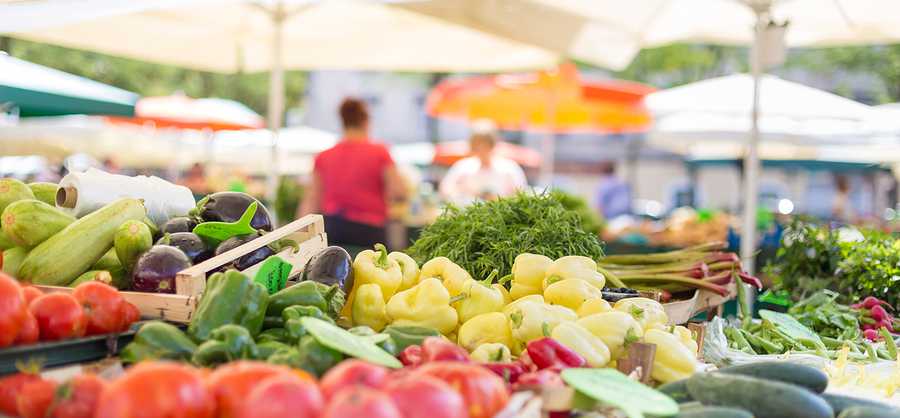With 2017 closing in on the halfway mark, what food trends have been at the forefront, and what will continue throughout this year? Many of the trends stem from those of years prior, delving further into health and sustainability. Here are some of the food trends you may see popping up in your grocery stores, news feeds, and kitchens this year.
1. Plant-Based "Meats"
As more people are adopting vegan and vegetarian diet practices, new meatless culinary options are emerging. Oftentimes, these alternatives strive for flavor and texture that's comparable to that of meat. From a plant-based burger that smells, tastes, and even looks like beef to classic takes with unique ingredients like jackfruit "pulled pork," creativity is at the forefront of this movement.
2. Repurposed Food Waste
With growing interest in the global environment, there has been an effort to make the food system more sustainable. A huge trend coming into the market is repurposing food waste instead of throwing it away or even composting it. From baked goods, smoothies, and broths made from veggie and fruit pulp to making teas and infused vinegar and oils with fruit and vegetable peels, the options of how you can repurpose food waste at home are only limited by your imagination. Even foods that you may not think are edible, like kale stalks and broccoli stems, are actually great sources of nutrients and can be the star of many recipes. Grocery stores are also catching onto this trend by selling products like condiments and snacks that repurpose produce seeds, skins, stems, and rinds.
3. Alternative Pasta
People have a lot of requirements for their pasta: more protein, less gluten, and fewer calories. Enter the alternative pastas popping up in markets and kitchens across the nation. A popular food trend of years past has been spiralizing veggies for a wheat-free, low-calorie noodle that's a perfect base for your favorite sauce, cheese, and mix-ins. The latest trend is legume-based pasta. With primary ingredients including chickpeas, lentils, or black beans, these new noodles add a healthy dose of fiber and protein to your pasta dinner without the gluten. These new pastas are a particularly great choice for vegans and vegetarians who may not otherwise get enough protein or those who follow a gluten-free diet.
4. Sourdough Bread
With more and more Americans going gluten-free, sourdough bread is increasing in popularity. Most breads are leavened using baker's yeast, creating a quick, artificial rise. However, sourdough bread uses something called a "starter" as its leavening agent. A starter is made from a combination of natural yeast and bacteria inside a mixture of flour and water. The starter works by fermenting or digesting the bread dough, producing gas as a digestive by-product and causing sourdough bread to rise. But more importantly, this digestion of wheat prior to cooking does miracles for those who are sensitive to gluten. Because the wheat is partially broken down prior to cooking and consumption, there is actually less gluten in some sourdough breads. If you have celiac disease, you should still be cautious about eating sourdough bread made from wheat and speak with your doctor or registered dietitian before including it in your diet.
The food trends you'll likely see this year are rooted in the interest of health and sustainability. From new options for vegetarians and vegans to ways to reduce food waste, these trends are creative, responsible, and delicious. Use these food trends to inspire and influence your cooking and grocery store trips as you eat your way through 2017!




